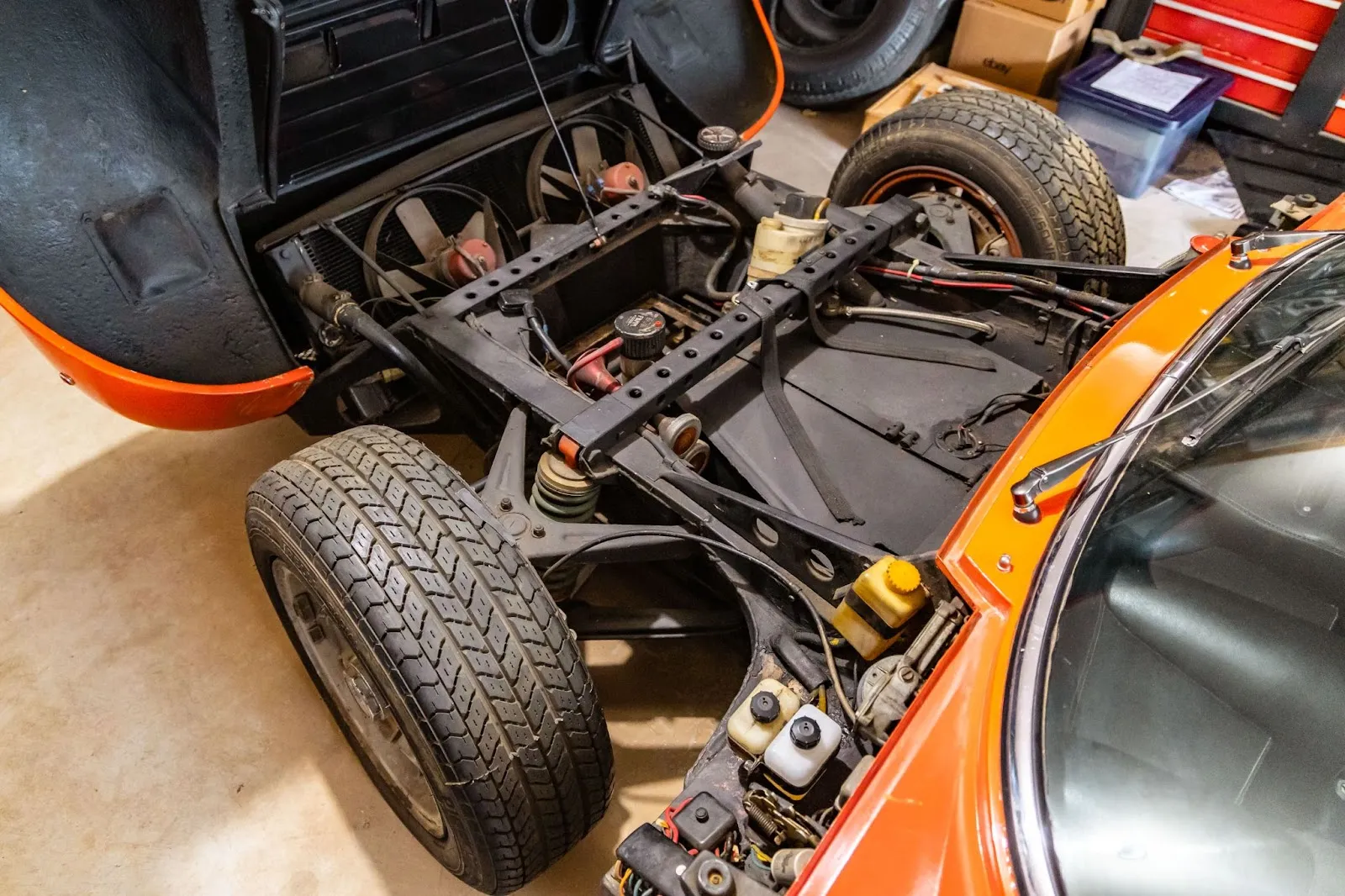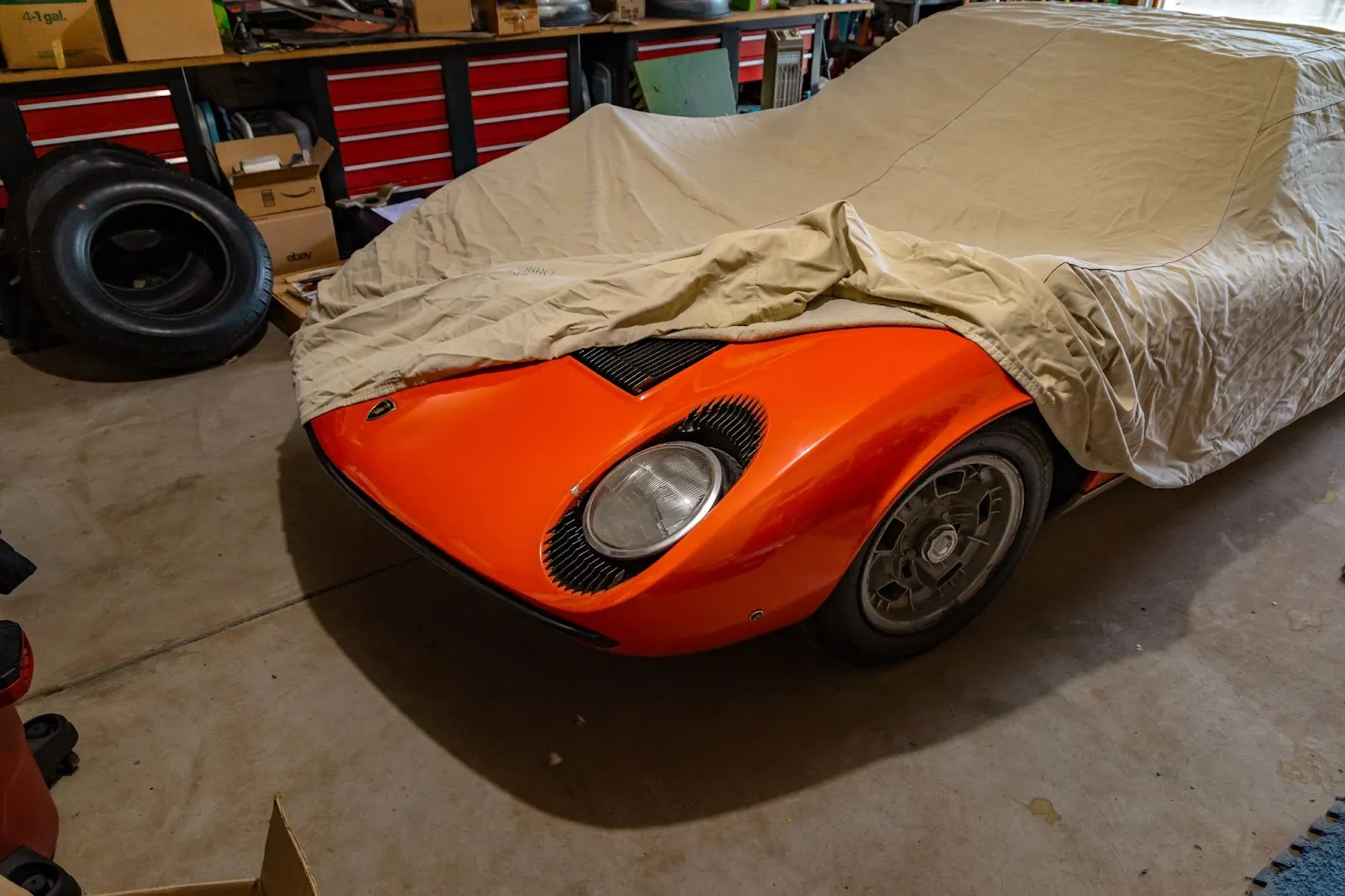How a Barn-Find Miura S Returned Home After 50 Years
Sometimes, the universe has a sense of humor about timing. In a California garage, covered in dust and memories, sat a 1971 Lamborghini Miura S that hadn’t seen daylight since the late 1990s. For more than 25 years, this legendary car waited patiently to be rediscovered. But the story goes deeper. It found its way back to the same man who had owned it five decades earlier.

Here is what actually happened. Ross, our young salesman, stumbled upon this car during what seemed like routine research. He had no idea he was about to uncover a piece of Curated’s family history.
This particular Miura S carried specifications that made it truly one-of-a-kind for the American market: factory air conditioning, full black leather interior, and matching numbers, an extremely rare specimen for the United States.
As the team dug deeper into the car’s provenance, they discovered something that sent chills down their spines. John Temerian Sr. had owned this exact car back in 1971. He had purchased it from someone in Boston, enjoyed his time with it, and eventually sold it for $16,500 to help fund the purchase of his infamous black Miura SV from the New York Auto Show.
The original owner, Howard Ray, had personally picked up the car in Italy and brought it back to the United States. This personal touch added another layer to the car's unique story. Here is how the story unfolded:
The original, unrestored form of Miuras produced between 1966 and 1973, has become more and more rare. The majority of these iconic supercars, which have aged for over five decades, have undergone some level of restoration or modification. So it has become extremely difficult to find a Miura that is completely untouched, numbers-matching, with original interior and mechanical components
The specifications told their own story. Most early Miuras came with vinyl or cloth interiors, but this one boasted full black leather throughout. The factory AC was another rarity, as was the 8-track player that John Sr. remembered vividly. All these were signatures of a time when owning a Miura meant living life at full throttle.

The Restoration Journey
When it comes to preparing unique specimens for the next caretaker, the whole journey takes several steps.
Initial Assessment & Historical Research
Walking into that California garage felt like stepping back in time. The Miura still had its original interior, which was a true testament to the quality of materials from decades ago. The bodywork showed its age with the expected dings and scratches, but nothing fatal. This is where the rediscovery started.
The first step in any serious restoration involves extensive documentation. Our approach began with photographing every detail, cataloging each component, and beginning the meticulous process of researching the car's history through factory records and period documentation.
Working with specialized organizations proved invaluable. These connections provided access to original factory records, correspondence, and technical specifications that would prove crucial during the restoration process.
Our global network of specialists and archives represents years of relationship-building that individual collectors simply cannot replicate. When you restore a vintage car of this significance, authenticity is essential.
Disassembly and Sourcing Authentic Parts
Decades of sitting had taken their toll in some areas of the car, while other parts remained surprisingly pristine. Sourcing authentic Miura parts presents unique challenges that separate amateur efforts from professional restorations. These cars were produced in limited numbers, and many original components are no longer available.
This process requires patience and expertise that only comes from years of experience. Modern reproduction parts might look similar, but they lack the subtle details that distinguish an authentic restoration from one using well-executed replicas. The chrome mirrors, the specific gauge faces, even the alarm system installation matter when the goal is complete authenticity.
Mechanical & Cosmetic Resurrection
Bringing a Miura of such a caliber back to life requires extensive knowledge of the car's complex V12 engine and intricate systems, which is why mechanical restoration is so crucial. A proper mechanical restoration involves sourcing the correct gaskets and seals, as many modern equivalents do not match the original specifications. It is common for the process to involve a complete engine rebuild, transmission overhaul, and attentive attention to the car's unique transaxle configuration.
Attention to Detail
When you restore a car like this, attention to detail is highly important. The original 8-track player that John Sr. remembered would have to be restored to perfect working order. This would mean sourcing specialized parts and finding a technician familiar with 1970s audio equipment.

Tips for Aspiring Restorers
For enthusiasts inspired by this story and considering their own restoration project, these five essential principles can guide the journey toward success:
First, conduct deep archival research before touching the car. The foundation for every decision that follows is based on understanding your car's history, specifications, and unique characteristics. This research phase often reveals surprises that can have a significant impact on the restoration approach.
Second, use certified OEM parts wherever possible. While reproduction parts may appear to be a cost-effective solution, they often lack the quality and authenticity of original components. Investing in genuine parts yields benefits in both quality and long-term value.
Third, work exclusively with experienced restoration experts. This isn't a job for weekend warriors or general mechanics. Professional restorers have the knowledge, skills, and connections to make a successful project or a costly mistake. So Miura restoration requires expertise that can only be acquired through years of experience.
Fourth, document everything comprehensively for provenance. Future owners will value comprehensive records of the restoration process, and proper documentation has a significant impact on the car's value and authenticity. The legacy created by professional photography, detailed work logs, and careful record-keeping throughout the process is an addition to the car's story rather than a replacement.
Fifth, embrace the journey - it’s deeply personal. When you restore a vintage car, you work with metal and leather, but you also preserve memories. The emotional rewards often exceed the financial ones.

Setting Expectations Right
It's important to realize that any restoration process goes beyond being a mechanical undertaking. Your resolve, budget, and attention to detail will all be tested during the restoration process. To achieve success, it is necessary to build a team of specialists who have a deep understanding of these cars, from body experts who know Bertone's construction techniques to mechanics who know the intricacies of Lamborghini's early V12 engines. Here are the most important ingredients:
Time, Money, and Patience
Anyone considering restoring a 50-year old car must understand that restoration operates on a different timeline than normal life. From discovery to completion, such projects may span 9-12 months of intensive work by skilled professionals. The process can't be rushed without compromising quality, and quality is non-negotiable when dealing with such cars.
The financial investment reflects the complexity of the work. Beyond the initial purchase price, restoration costs include specialized labor rates, authentic parts that often cost multiples of reproduction alternatives, and hours of research needed to ensure accuracy.
Patience becomes the most crucial virtue. There are delays waiting for parts sourced from around the globe, setbacks when hidden problems reveal themselves during disassembly, and moments when the entire project seems overwhelming. But these challenges are part of the journey!
Provenance and Authenticity
In the collector car world, provenance means everything. A car's history, its previous owners, and its journey through time contribute as much to its value as its mechanical condition.
Our philosophy recognizes that authenticity requires more than just using correct parts. It demands understanding the car's original specifications and the subtle differences that distinguish one model year from another. The research process often reveals new details about the car's original life, its travels, and the people who cared for it along the way.
Documentation becomes highly important throughout the process. Every step, every decision, and every component must be recorded with professional photography and detailed notes. Future owners will appreciate this attention to detail, and the car's value depends partly on the thoroughness of this documentation.

The CURATED Approach
Our team approaches restoration with a philosophy that goes beyond mere ownership. We aim to keep the original designer's vision intact and guarantee that the car can be enjoyed for decades to come. This balance between preservation and usability requires expertise, patience, and a deep respect for the craft.
Our approach to any supercar from the past is about educating and supporting new custodians, giving them the tools to preserve and celebrate these rare icons.
From John Temerian Sr.'s original ownership in 1971 to the car's rediscovery by Ross in California, from its patient slumber in that suburban garage to its triumphant return to Miami, this Miura's story demonstrates the power of passion, persistence, and the unbreakable bonds that connect us to the beautiful cars we love.
CURATED continues to pave the way for the next generation of collectors, helping them chase the "poster cars" of their youth while preserving these rare icons for future enthusiasts to discover.















.webp)
